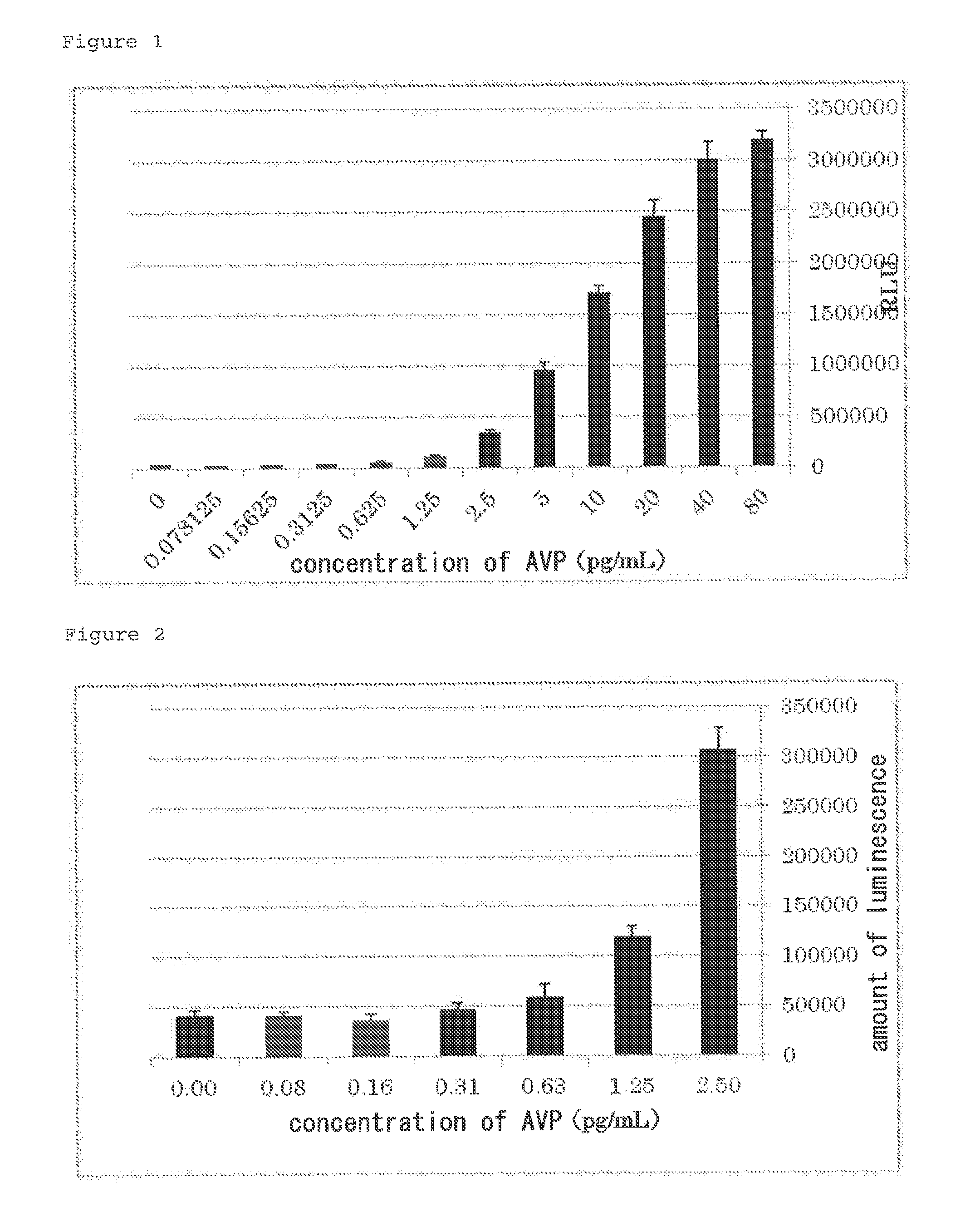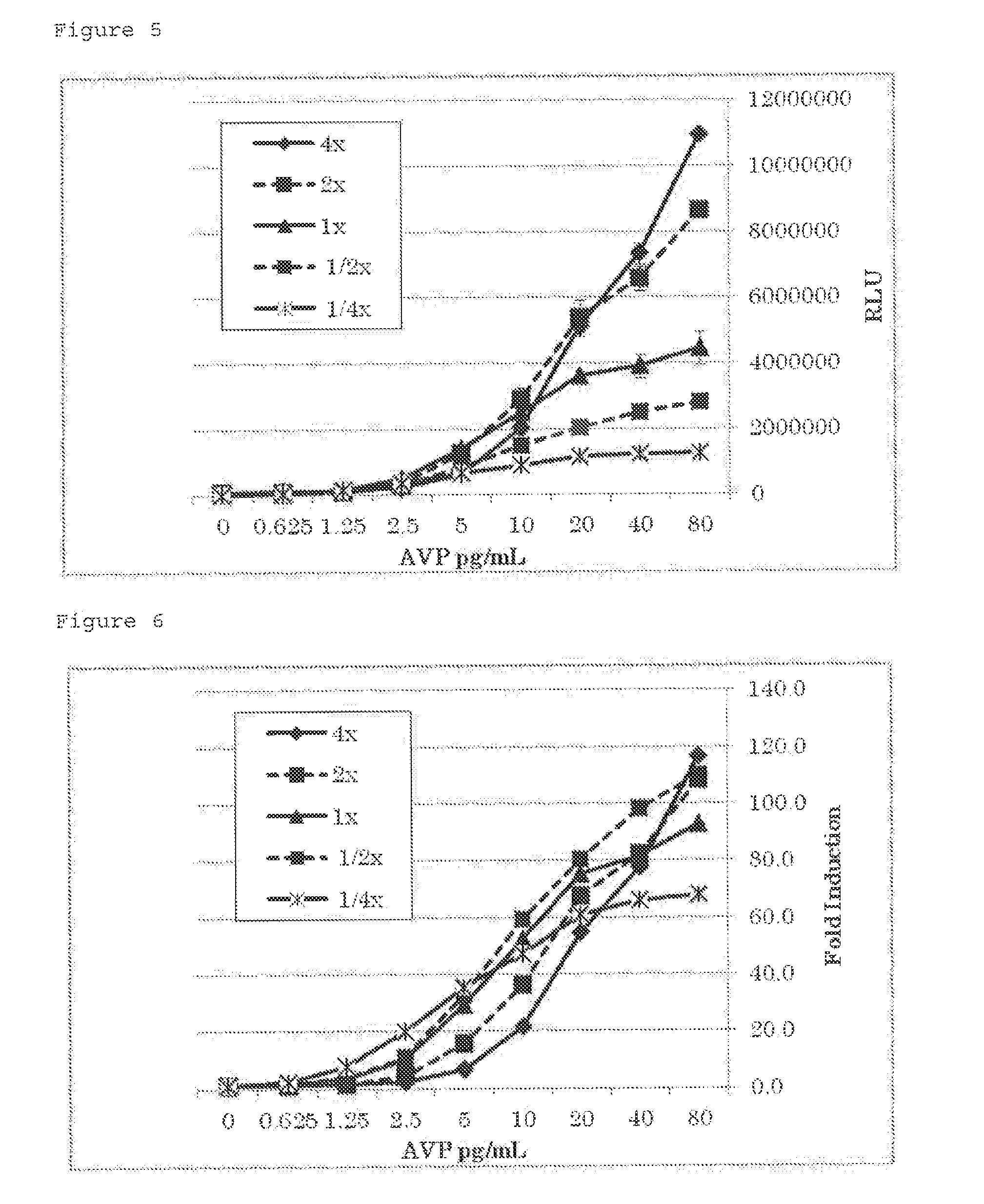Bioassay method for detecting physiologically active substance
a biological test and substance technology, applied in the field of biological test methods for detecting physiologically active substances, can solve the problems of poor sensitivity of the competition test method, limitations, and inability to detect avp in plasma with high sensitivity, and achieve the effect of simple and safe procedures
- Summary
- Abstract
- Description
- Claims
- Application Information
AI Technical Summary
Benefits of technology
Problems solved by technology
Method used
Image
Examples
examples
A. Experiment on Cell Expressing V2R
1. Details on Method for Constructing Frozen Cell
[0174]The cDNA sequence of human V2R (Genbank No. NM—001146151.1) (SEQ ID NO: 5) was amplified by the PCR method from a human-derived cDNA library and cloned into pUC18. The human vasopressin receptor isoform 2 (V2R) cDNA cloned in pUC18 was recloned into a pEF2 vector to prepare pEFhV2R.
[0175]The cDNA sequence of a cyclic nucleotide dependent calcium channel (Genbank No. BC048775) (SEQ ID NO: 4) was amplified by the PCR method from a mouse olfactory epithelial cell-derived cDNA library (1994-bp) and cloned into an expression vector (pCMVSPORT, Invitrogen Corp.) to prepare pmCNGα2 (FIG. 18). Furthermore, for enhancing cAMP selectivity and sensitivity thereto, a construct pmCNGα2MW expressing a modified cyclic nucleotide dependent calcium channel (SEQ ID NO: 6) in which 460th cysteine (C) is substituted with tryptophan (W) and the 583rd glutamic acid (E) is substituted with methionine (M) was prepare...
PUM
| Property | Measurement | Unit |
|---|---|---|
| Luminescence | aaaaa | aaaaa |
Abstract
Description
Claims
Application Information
 Login to View More
Login to View More - R&D
- Intellectual Property
- Life Sciences
- Materials
- Tech Scout
- Unparalleled Data Quality
- Higher Quality Content
- 60% Fewer Hallucinations
Browse by: Latest US Patents, China's latest patents, Technical Efficacy Thesaurus, Application Domain, Technology Topic, Popular Technical Reports.
© 2025 PatSnap. All rights reserved.Legal|Privacy policy|Modern Slavery Act Transparency Statement|Sitemap|About US| Contact US: help@patsnap.com



